Miami’s South Beach is a living museum of Art Deco architecture, with its pastel-colored buildings, sleek lines, and distinctive geometric patterns that transport visitors straight back to the glamorous 1930s and 40s. These structures aren’t just buildings—they’re perfectly preserved time capsules that tell the story of Miami’s golden age.
Here is a list of outstanding Art Deco gems in Miami that truly capture the essence of this distinctive architectural style.
The Colony Hotel
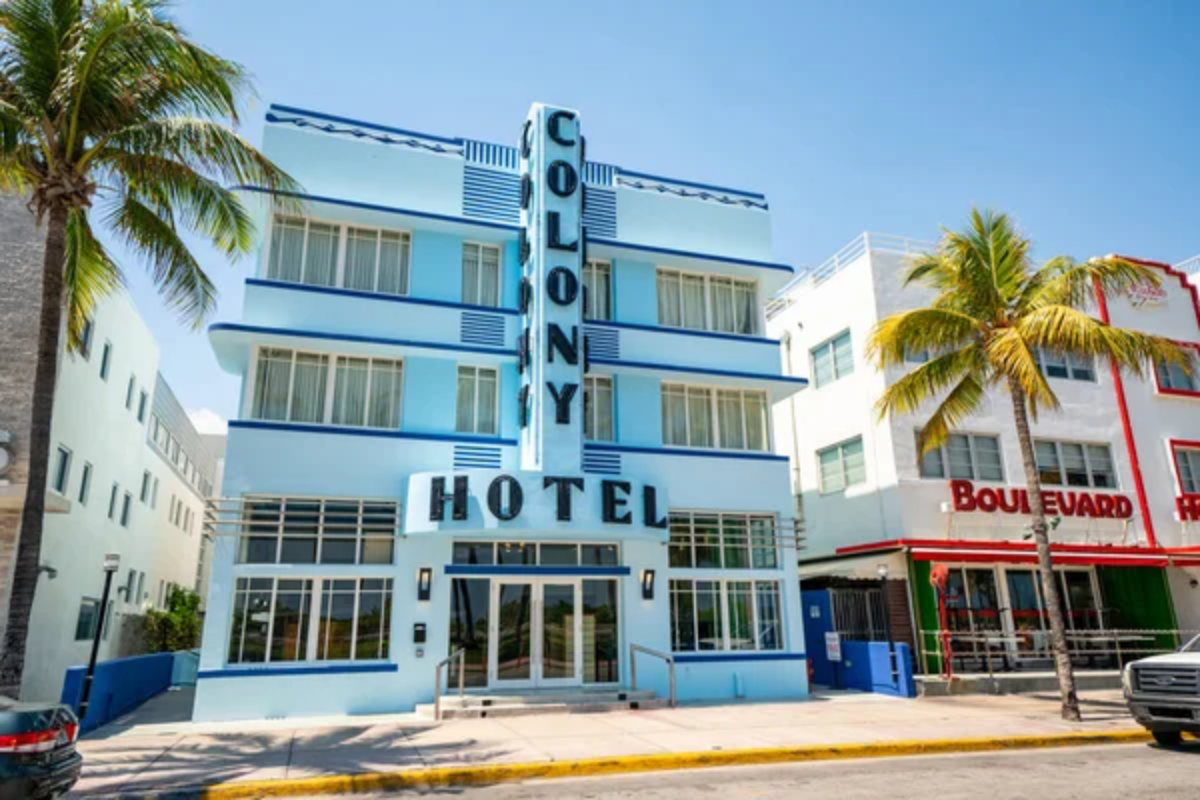
The Colony Hotel stands as perhaps the most photographed building in South Beach, and for good reason. Its iconic neon sign glows electric blue against the night sky, while during daylight hours, its brilliant blue façade with white trim epitomizes the Miami Art Deco palette. Built in 1935 by architect Henry Hohauser, the Colony features classic porthole windows, eyebrows, and streamlined curves that embody nautical-inspired Art Deco.
The lobby retains original terrazzo floors that have welcomed guests for nearly a century.
The Carlyle
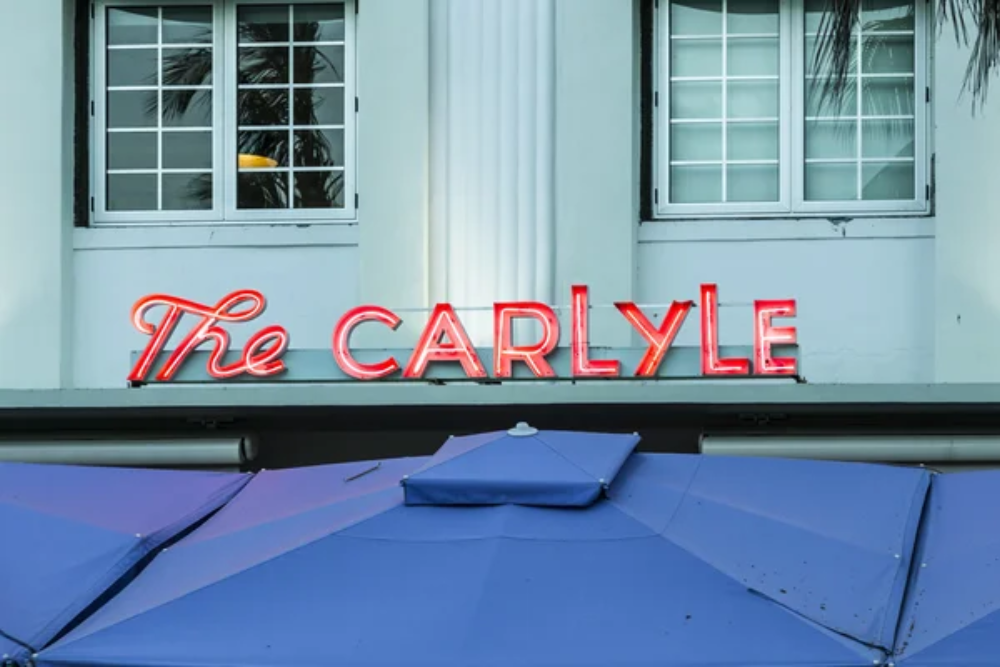
Anyone who’s seen the film ‘The Birdcage’ will instantly recognize The Carlyle’s distinctive façade. This 1941 masterpiece by Kiehnel and Elliott features three parallel vertical bands running up its face, creating a beautiful symmetry that draws the eye upward. The building’s magnificent ocean-facing windows allow natural light to flood into what was once apartment units but now houses various businesses.
Its preserved original signage and curved edges make it one of the district’s most impeccably maintained examples.
Like Travel Pug’s content? Follow us on MSN.
The Webster
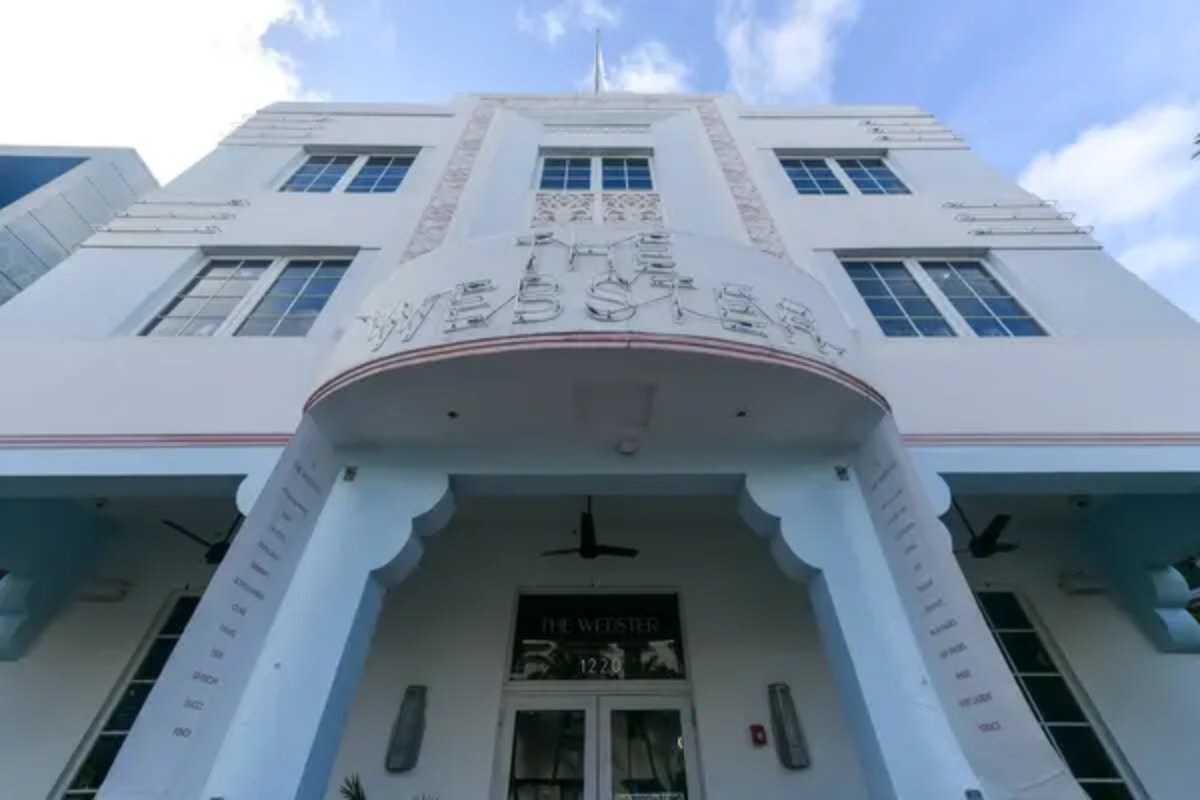
The Webster represents Art Deco luxury reimagined for contemporary use. Built in 1939 as a hotel, this Henry Hohauser design now houses a high-end boutique while maintaining its architectural integrity. The building’s soft pink exterior with mint green accents creates a distinctly Miami color scheme, while its symmetrical façade and stepped entrance maintain classic Deco lines.
What makes The Webster special is how the interior renovation respected original elements like terrazzo floors while adapting the space for modern retail.
The McAlpin

The McAlpin showcases Miami’s signature ‘tropical deco’ style with its pastel pink and turquoise color scheme. Built in 1940 by L. Murray Dixon, this Ocean Drive landmark features classic eyebrows—those horizontal overhangs that shade windows while creating distinctive shadow lines on the façade. The building’s perfect symmetry and rule-of-three design elements (three windows across, three floors high) demonstrate the mathematical precision that Art Deco designers favored.
At night, neon lighting outlines its architectural features, creating a glowing testament to vintage Miami.
The Breakwater
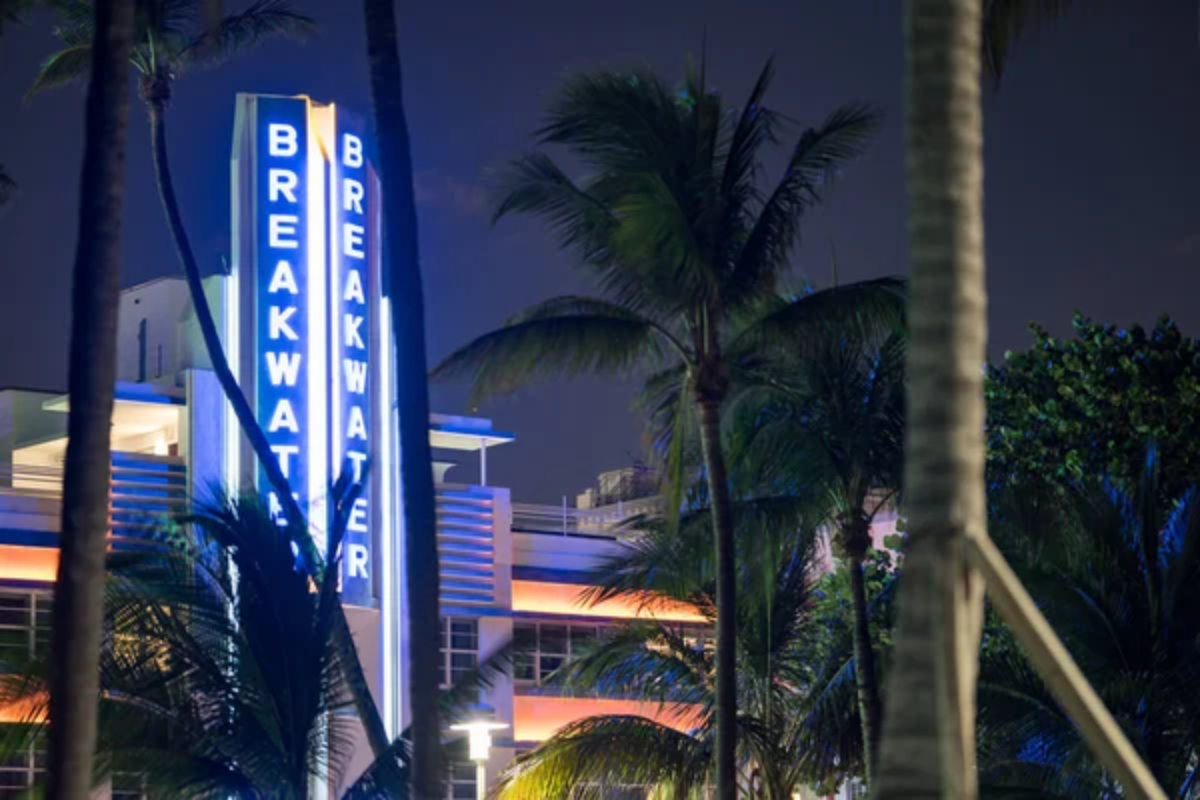
The Breakwater Hotel epitomizes the streamlined nautical influence in Miami’s Art Deco aesthetic. Its ship-like curved corners and porthole windows directly reference the maritime world, while its prominent central tower rises like a ship’s bridge. Built in 1936 by Anton Skislewicz, the hotel underwent a meticulous restoration that preserved its stepped façade while updating the interiors for modern guests.
The Breakwater’s prominent position on Ocean Drive makes it one of the district’s most recognizable landmarks, especially when its neon blue trim illuminates at sunset.
Like Travel Pug’s content? Follow us on MSN.
The Delano
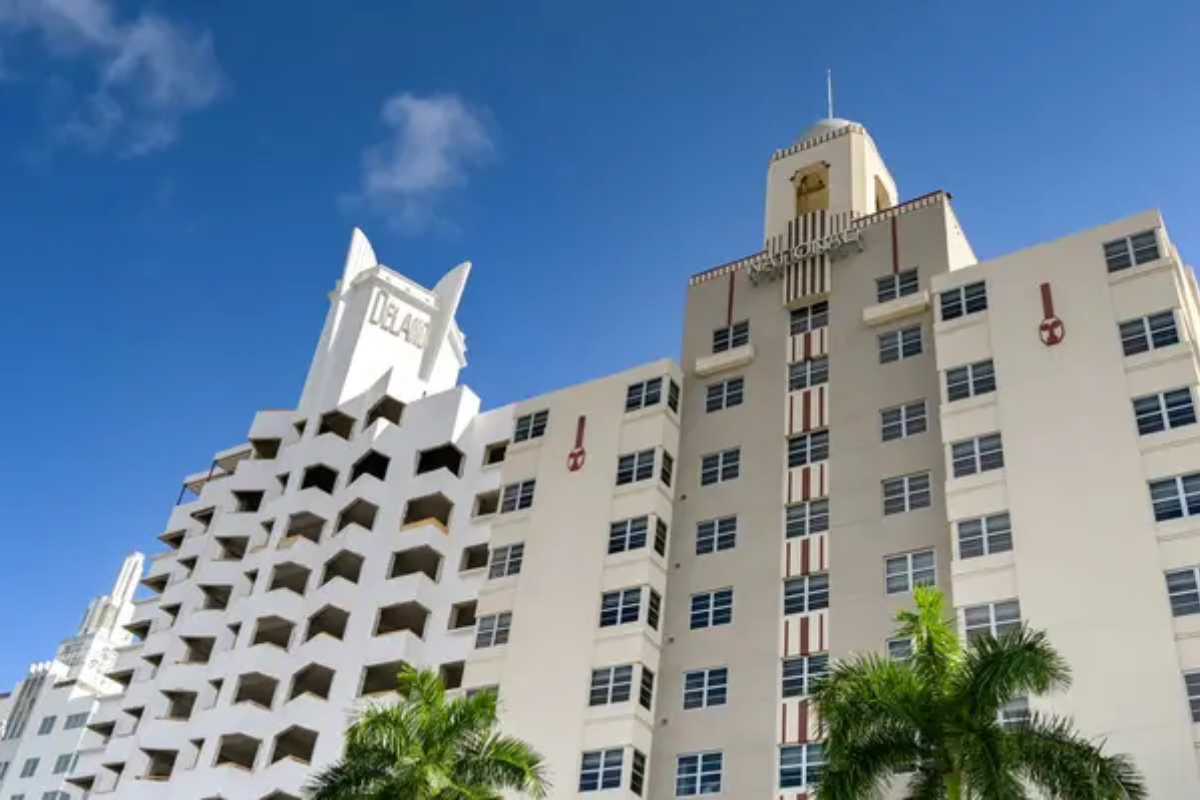
The Delano represents Art Deco grandeur at its most imposing. Rising twelve stories—significantly taller than most South Beach buildings—this 1947 structure designed by Robert Swartburg combines Art Deco with elements of International Style. Its gleaming white façade contrasts dramatically with the pastel palette of neighboring buildings, while its lobby features theatrical original elements, including floor-to-ceiling columns.
The Delano’s restoration in the 1990s by designer Philippe Starck brought contemporary flair while honoring the building’s architectural heritage.
The Essex House
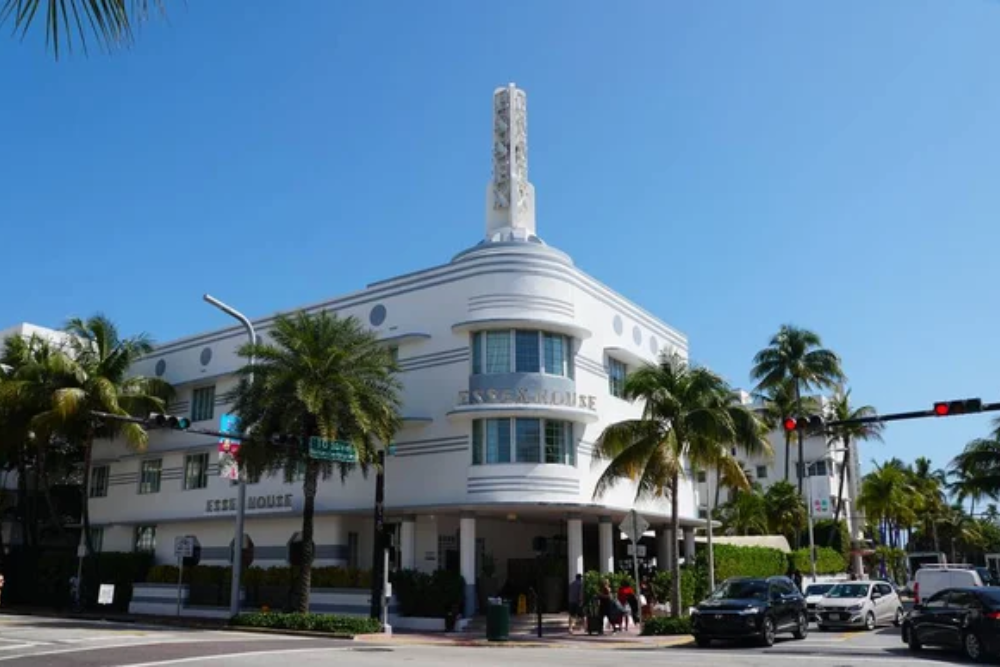
The Essex House boasts one of the district’s most distinct lobbies, featuring a spectacular ocean-themed mural that has survived since 1938. Architect Henry Hohauser (responsible for several South Beach gems) designed this hotel with classic stepped massing and symmetrical window placement.
The façade’s horizontal banding creates a sense of speed and motion typical of the streamline moderne subset of Art Deco. The Essex’s neon sign remains intact and original, serving as a beacon on Collins Avenue for more than 80 years.
The Marlin
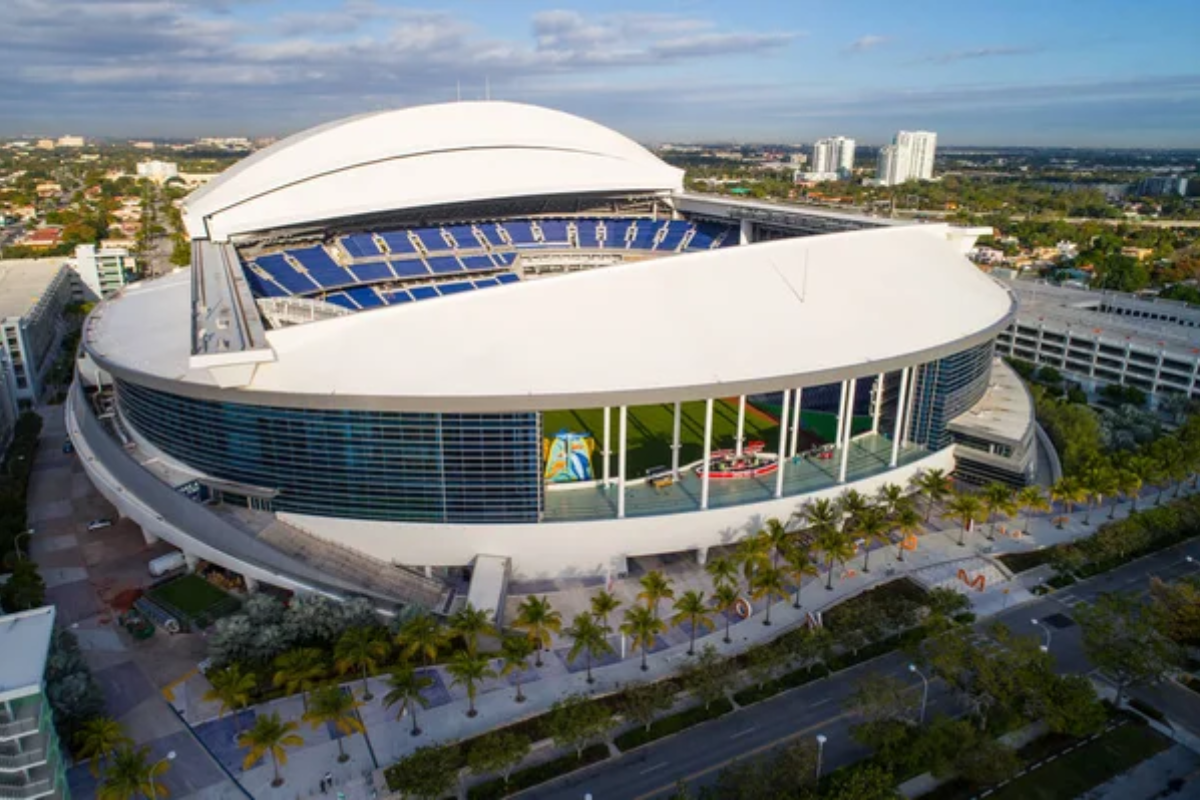
The Marlin Hotel represents how Art Deco buildings have adapted to changing times while maintaining their character. This 1939 L. Murray Dixon creation now houses a recording studio where U2, Aerosmith, and Beyoncé have recorded tracks. Its modest three-story façade features classic eyebrows and a symmetrical design that exemplifies the district’s smaller-scale treasures.
The Marlin’s preservation demonstrates how these buildings can accommodate entirely new functions while maintaining their architectural integrity.
Like Travel Pug’s content? Follow us on MSN.
The Tides
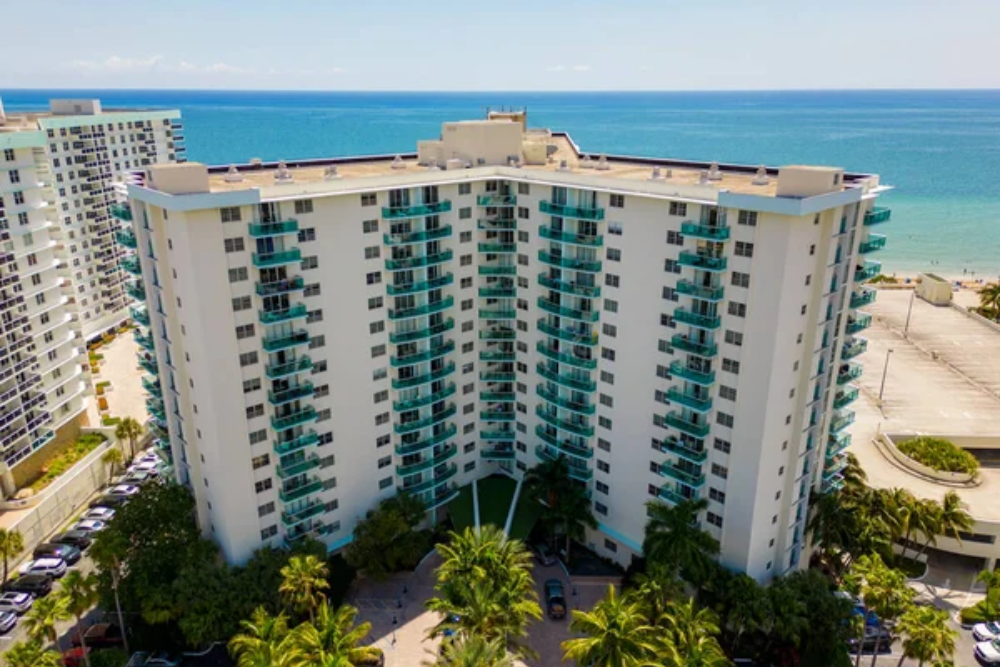
The Tides Hotel stands as South Beach’s first true luxury high-rise, towering at twelve stories when most neighboring buildings reached only three or four. Designed in 1936 by L. Murray Dixon, the building features a commanding central tower flanked by graduated wings that create a wedding cake-like profile.
The Tides remains distinctive for its exceptional height and brilliant white façade accented with subtle decorative elements rather than the bold colors of its neighbors. Its porthole windows and curved corners maintain the nautical theme common throughout the district.
The Cardozo

The Cardozo holds special significance as one of the district’s anchor properties, prominently situated at 13th and Ocean Drive. Built in 1939 by Henry Hohauser, this three-story hotel features a dramatic curved corner entry that sweeps guests into its embrace.
The façade combines horizontal eyebrows with vertical elements that create a balanced composition typical of Miami Deco. Recently restored to its original glory, the Cardozo’s preservation efforts included recreating its distinctive green and white color scheme based on historical documentation.
The Victor
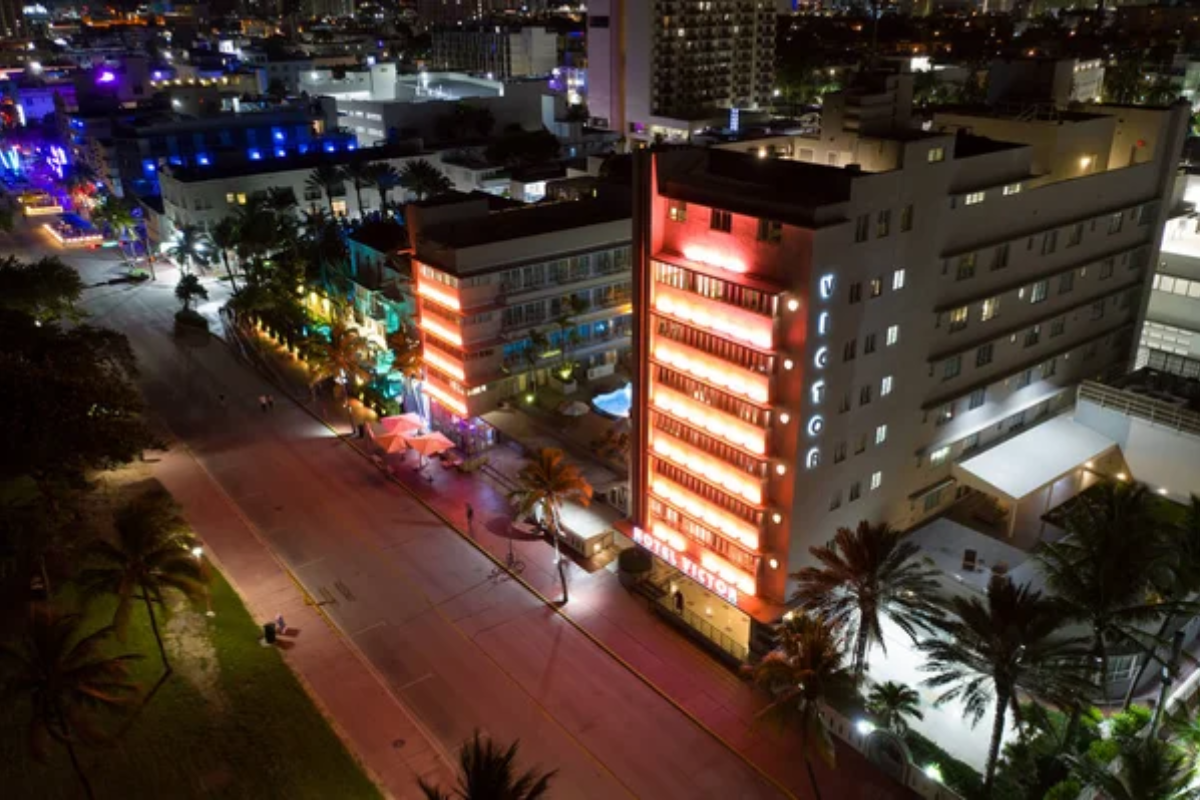
The Victor exemplifies how Art Deco architects used symmetry to create memorable façades. This 1937 L. Murray Dixon design features a perfect central projection flanked by identical wings. The building’s restoration highlights its original glass block windows—a distinctive Art Deco material that filters light beautifully throughout interior spaces.
The Victor’s prominent V-shaped neon sign remains an iconic Ocean Drive landmark, demonstrating how these buildings were designed to be as impressive at night as during daylight hours.
Like Travel Pug’s content? Follow us on MSN.
The Netherland
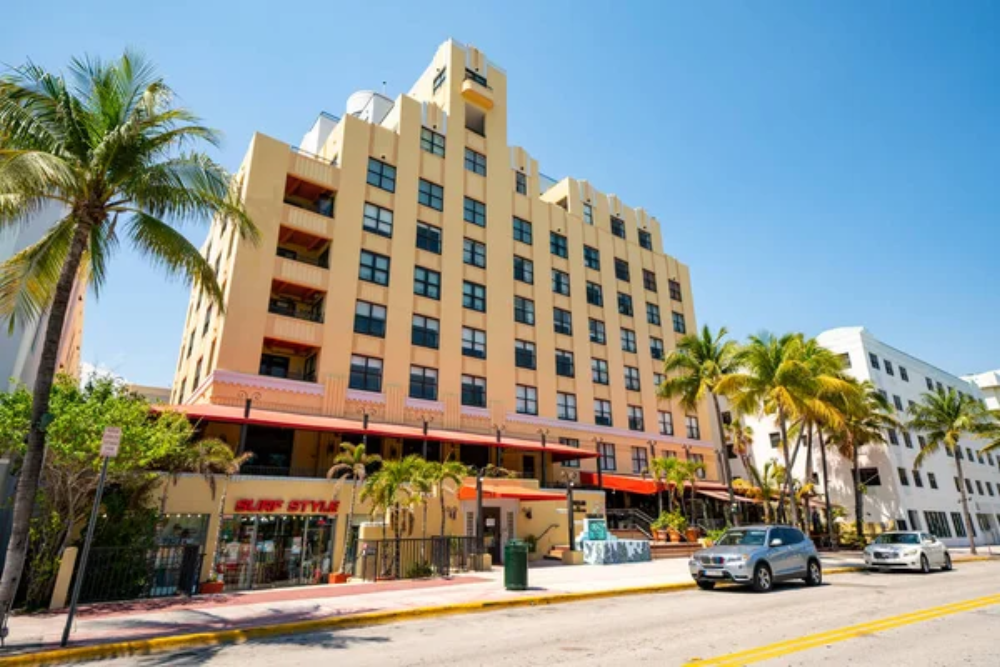
The Netherland showcases exceptional geometric detailing uncommon even among Miami’s Deco treasures. Built in 1936 by architect Igor Polevitzky, the façade features zigzag patterns and stepped setbacks that create dramatic shadows throughout the day.
What distinguishes The Netherland is its magnificent terrazzo entry floor—a sunburst pattern that has survived intact since construction. This smaller hotel demonstrates how even modest-sized buildings incorporated lavish decorative elements that elevated them beyond simple structures.
The Park Central
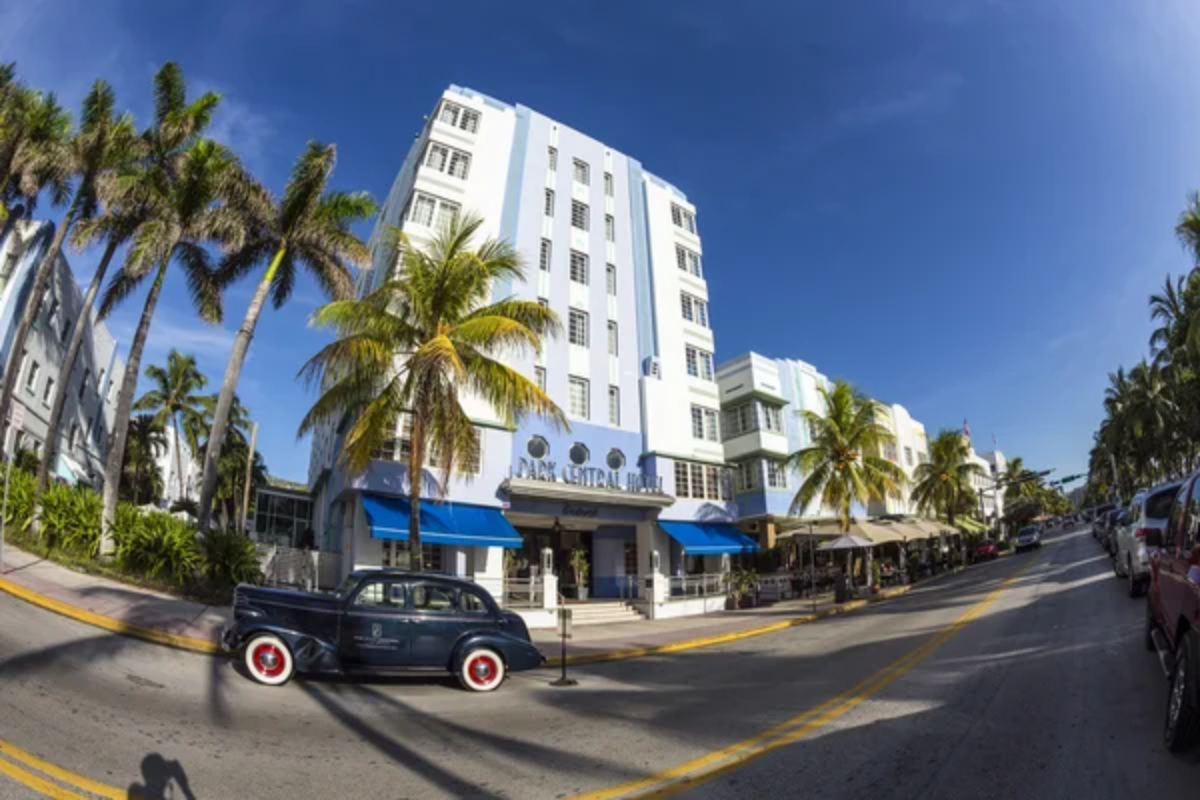
The Park Central holds significance as one of the district’s most beautifully preserved hotels that still functions in its original capacity. This 1937 Henry Hohauser creation features a perfectly symmetrical façade with a prominent central entrance and flanking wings.
The building’s light blue exterior with white trim exemplifies the South Beach palette that makes the district so photographable. The Park Central’s lobby retains original terrazzo floors, wood paneling, and Art Deco light fixtures that create an authentic period atmosphere rarely found elsewhere.
The Leslie
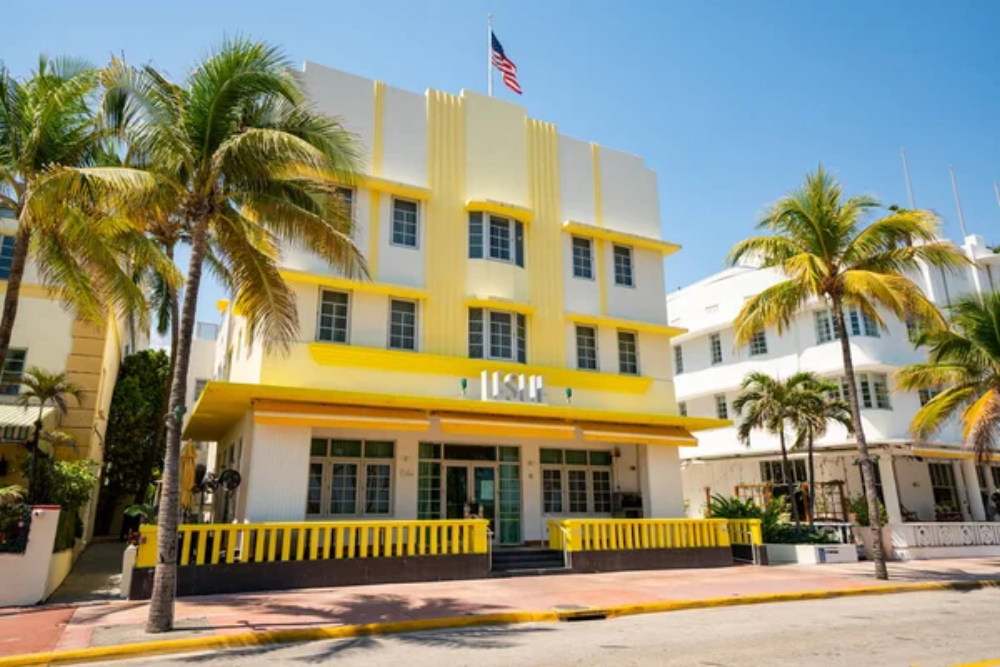
The Leslie represents how even apartment buildings embraced Art Deco flair in 1930s Miami. This residential structure, designed by Albert Anis in 1937, features a distinctive stepped façade with geometric relief designs that create subtle shadow patterns.
What makes The Leslie notable is its remarkable preservation—the building looks virtually identical to when it was constructed, from its mint green and cream color scheme to its original windows. The Leslie demonstrates how Art Deco extended beyond hotels to shape everyday residential architecture throughout South Beach.
Like Travel Pug’s content? Follow us on MSN.
The Congress
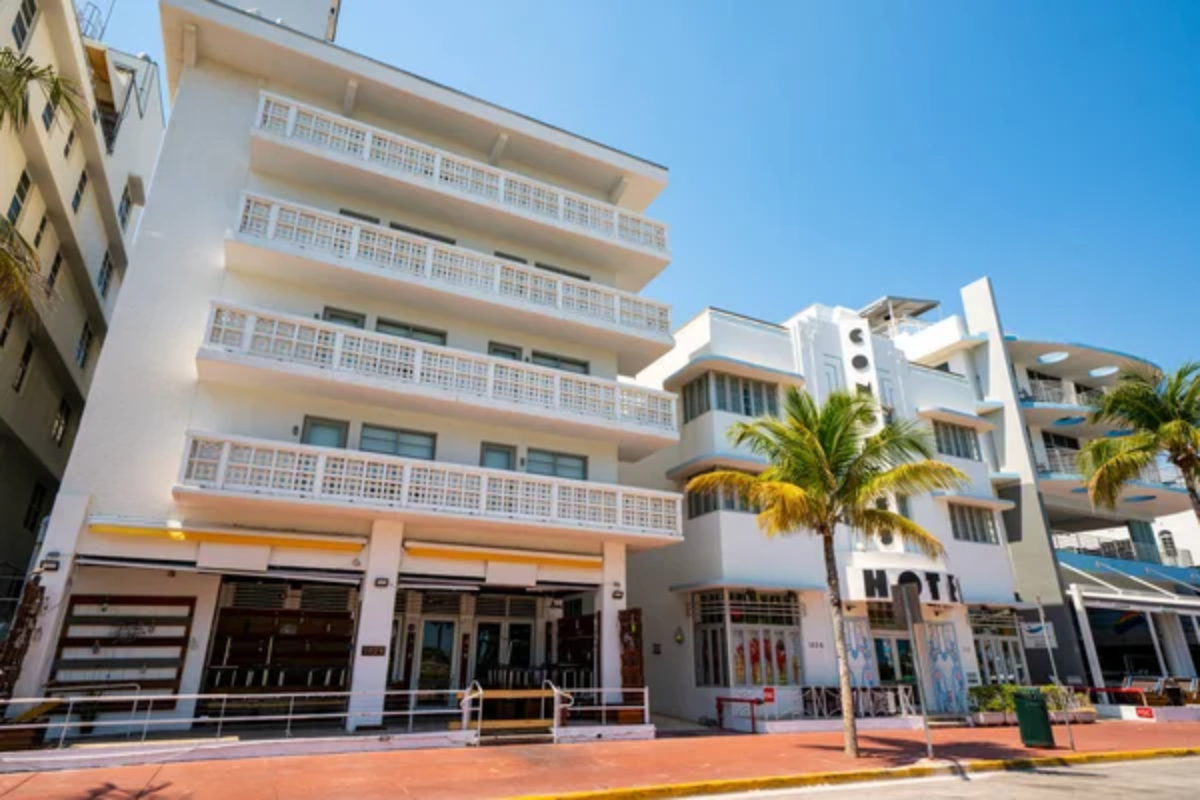
The Congress Hotel showcases the playful side of Art Deco with its asymmetrical details and bold color choices. Built in 1936 by Henry Hohauser, the building features a striking peach façade with azure accents that epitomize the district’s tropical palette.
Its façade incorporates both curved and angular elements, creating a dynamic composition that draws the eye across its surface. The Congress stands out for its corner location, which allowed the architect to create a dramatic curved entrance that embraces passersby from two directions.
Preserving Miami’s Architectural Heritage
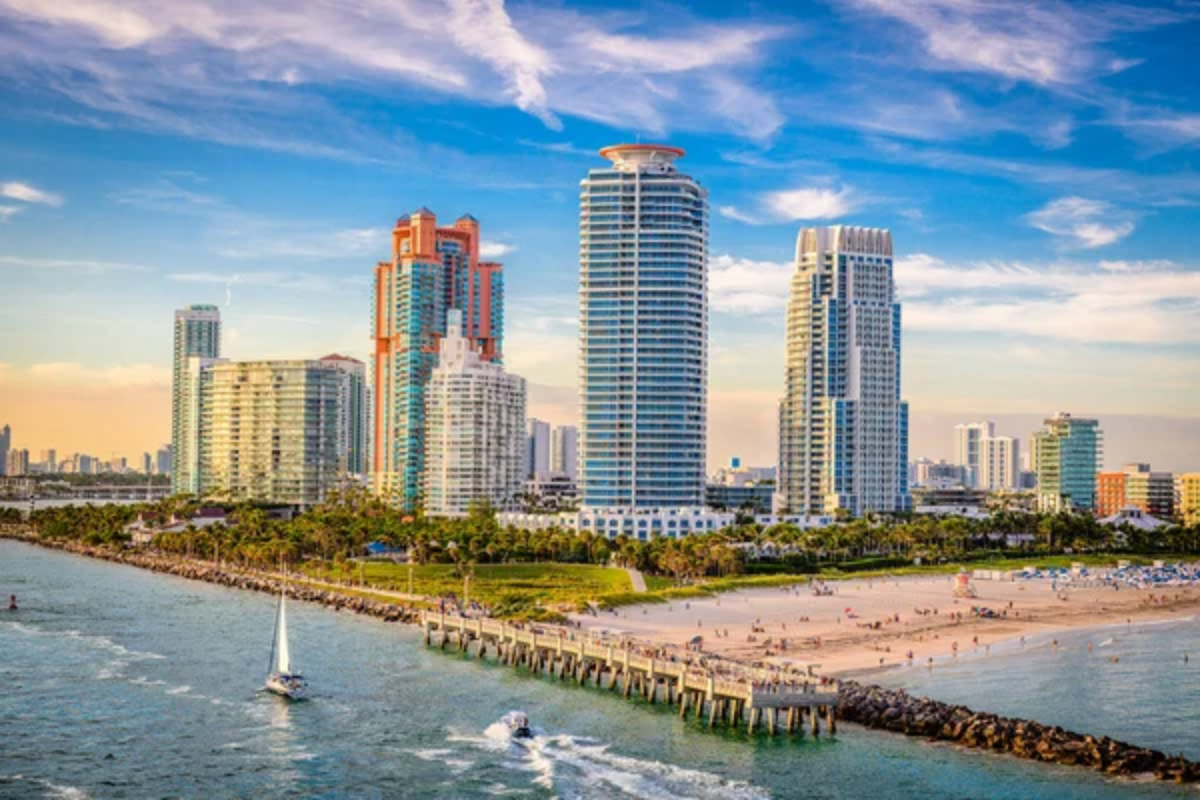
Miami’s Art Deco district represents the largest concentration of Art Deco architecture in the world, saved from demolition in the 1970s by preservationists who recognized its cultural significance. Today, these buildings aren’t just tourist attractions but living, functioning spaces that continue to serve their original purposes while teaching us about architectural history.
The next time you’re strolling down Ocean Drive, take a moment to appreciate these pastel-colored time machines—they’re not just beautiful buildings, but important chapters in America’s architectural story.
More from Travel Pug

- 20 Towns Built for One Purpose That Were Later Abandoned
- 15 Hidden Spots in Disney World’s Magic Kingdom Most Visitors Miss
- 20 Once-Popular Beach Towns That Are Now Ghostly Empty
- 15 Canyons in the U.S. That Are Just as Stunning as the Grand Canyon
- 10 Under-the-Radar Mountain Towns That Are Both Affordable and Beautiful
Like Travel Pug’s content? Follow us on MSN.
